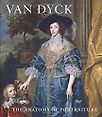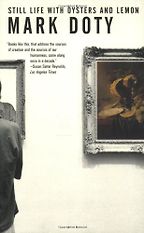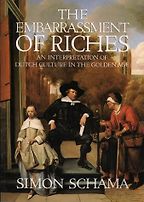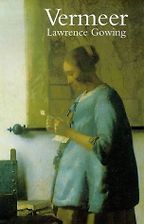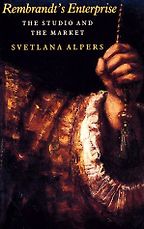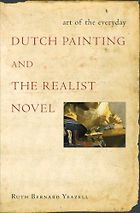Let me start by asking, why did you fall in love with Dutch painting? And when we talk about the Dutch Masters or the Dutch Golden Age, what do we mean?
The Dutch Golden Age is typically defined from the period of the Dutch Revolt, which started in 1566, and then scholars would mark the decline of the Dutch Republic at different points but, basically, we’re talking about a generous span of the 17th century. That’s the moment when the Dutch Republic establishes itself as an independent state—the likes of which has never been seen before in the world—and had this incredible economic blossoming and expansion through trade and global exploration.
As for me, I can’t quite pinpoint a single moment when I fell in love with Dutch art. I remember being a small child and poring over an image of Jan van Eyck’s ‘Arnolfini Marriage’, which is a painting from an earlier golden age of Flemish art, and I was really fascinated by the realism—for the lack of a better word. I loved the depiction of the fur of the dog, and the fruit in the windowsill, and the clothing. And then I remember reading something about how each of those things has a symbolic content in a sort of secret language, and that was very fascinating to me as a child. And over the years I continued to be drawn to the art of Flanders and of the Netherlands and had wonderful teachers for that subject. I ended up living in Belgium and learning Dutch. So, it’s been a long relationship now with that part of the world and its art.
The painting by van Eyck makes a nice segue to discussing the first book on your list, Mark Doty’s Still Life with Oysters and Lemon: On Objects and Intimacy. There’s so much life in this little book about still lifes. There’s a lot, too, about the role of art in life—it’s a meditation on the image versus the word, painting versus poetry, but one of the things that he clearly devotes a lot of time to is a very detailed, almost scientific enquiry, into objects and their representation.
Yes. One of the things that I found so moving in that book is the way that he talks about our emotional investment in things, and how something like the type of peppermint that his grandmother ate can have a huge resonance for him for his whole life. And I think he’s very right, that in one sense, that is what still life painting is about: the investment that humans make in things. When I put this list of five books together, it was very important to me not just to have five works of academic art history. I love having this book by a poet who is, in a sense, a layperson when it comes to Dutch art, even though he has clearly read a lot. This book is really talking about his individual emotional experience as a passionate museum-goer. And, for me as a curator, who happens to be responsible for the particular painting that inspired him, that was very moving to read.
It’s also a discussion of the way that a painting becomes a record. Holland in the 1600s saw a moment of economic blossoming, but any bloom will fade. A lot of what he describes is these paintings becoming prized objects—almost like heirloom objects—in their own right. And that reflection becomes a meditation on the transience of things.
As he and many others point out, transience is built into Dutch still life. You often have paintings of flowers that are starting to wilt, or a glass that has a chip or a crack into it. There are all these intimations of decline and decay, even as the objects are so beautifully rendered. That ties in with Simon Schama’s argument about the fundamental ambivalence of the Dutch who, even as they experienced this incredible economic prosperity and abundance, had a lot of guilt about it tied in with Calvinist religious beliefs, with the sense that they were constantly beset and imperilled on all sides by enemy forces.
“There’s this sense that they had been delivered by Providence but they could lose it all at any moment”
There’s this sense that they had been delivered by Providence but they could lose it all at any moment if they weren’t careful. And I think that notion of the fragility of happiness or beauty is really built into the still lifes that Doty writes about too.
A very Calvinist sensibility, I guess.
Calvinist, but also built into a lot of different traditions within Christianity I would say. You have what they call the ‘vanitas’ still life that exists throughout Europe. There’s always a sense that any enjoyment you have is fleeting and a little bit guilty.
Doty writes at one point of Dutch still lifes as ‘texts of abundance’. That’s very much the way that Schama seems to be reading a lot of these works. Schama’s book shows just what a cornucopia these paintings—these texts of abundance—were in what they represent, and his title The Embarrassment of Riches refers to this economic blossoming that you described. If Doty’s book is looking at these paintings almost as visual poems, Schama is really reading them as historical documents, wouldn’t you say?
There’s a big debate within the study of Dutch art about whether these works are pure transcriptions of reality, documents of a historical moment, or whether they are really symbolic texts that we should be interpreting on a figurative level. I think the debate comes down to this: is the best explanation of these images a thorough knowledge of Dutch history and culture at the time, such as Schama presents? Or is there something irreducible in the greatest Dutch art that you can’t boil down to historical context?
I think that is Gowing’s point in his book about Vermeer—and that was one of the reasons why I wanted to include it here. What he brings out is that you can know all there is to know about 17th-century Delft, and Vermeer’s contemporaries, but none of that explains why Vermeer is so much greater than any of the other genre painters working at the time. He adopts what you might describe as a formalist aesthetic approach to characterising the power of these paintings and characterising that irreducible quality. I think there’s a lot to be said for both perspectives. Obviously, you can’t understand Vermeer without understanding Dutch history and culture but, at the same, the visual can’t be reduced to an illustration of the textual either.
I think it’s fair to say that Vermeer’s technique was also unique, which probably sets him apart from most of the painting being produced at the time.
True. That goes back to another debate, which I personally think has been a bit overplayed, about his use or reliance on optical instruments. I think Gowing makes a good point, that Vermeer may have learned a few lessons from optical instruments, but that doesn’t really explain why he was interested in these very curious visual effects that often, in fact, interfere with a realistic depiction.
Technically speaking, his tonal system, not to mention his brushwork, contrasts with that of a lot of his peers. In Svetlana Alpers’ Rembrandt’s Enterprise, she sets Vermeer in juxtaposition with Rembrandt—with Rembrandt following a more narrative approach to his subject matter, while Vermeer you could describe as a more descriptive artist.
I debated a bit which book by Alpers I would include on my list. She really is the dominant figure in American art history working on Dutch art in recent years. She wrote this book The Art of Describing which is a more general account of 17th-century Dutch painting, and she basically concludes that book by admitting that she’s really neglected both Rembrandt and Vermeer and that she doesn’t feel that her account can fully be extended to them. And so, she follows that up with this monograph on Rembrandt, which I actually prefer.
“It’s a very powerful, interesting account of how the studio operated in the 17th century”
For me, it’s a very powerful, interesting account of how the studio operated in the 17th century, how artists thought of themselves as impresarios and also entrepreneurs. Again, it’s a very interesting approach to the monograph because on the one hand, you have Gowing, who’s writing, as I said, very much as a working artist—someone who is talking about the formal composition of pictures and, in a sense, brackets the surroundings of the artist, the history, the society that he lived in—and on the other hand, Alpers, who has a much more integrated account, at the same time as she attends to things like the brushwork.
So, Rembrandt and Vermeer, these are two towering figures. Just taking a step back, why choose books specifically about these two? Why not other Dutch masters such as Frans Hals, or Peter Bruegel the Elder or, indeed Mark Doty’s favourite, Jan de Heem?
That, again, was another difficulty I found when I compiled the list. I could have easily suggested five books about Rembrandt or five books about Vermeer. In the 20th and into the 21st century, those have been the two really dominant figures. And so, one of the rules I set myself was that I could only have one on each, but I did think it was important to have them both represented, just because the quality of work on them is so high, and they are often the figures through which people develop a love of Dutch art. But they also are really night and day in terms of their artistic personalities and what we know about them.
Get the weekly Five Books newsletter
Rembrandt is such a flamboyant figure and we know all about his personal life, his financial woes, and his love affairs. Vermeer, to use the great cliché about him, is much more of a sphinx. We do know a lot more than we used to, thanks to archival discoveries, but none of those discoveries really illuminates his art to any great degree. His personality remains this real mystery. Whereas, with Rembrandt, as towering of a genius as he is, you do feel that you can get to know him and you see reflections of the biography in the art.
I suppose though, with what documentary work there is, Gowing and some of his colleagues have done some extraordinary detective work. Some of it may be a little bit speculative, but one of the things that I particularly liked in reading Gowing’s account was how he really tries to discern from the pictures what Vermeer’s state of mind might have been at the time that he was making them, and how his personal story may be reflected or refracted through his paintings.
He has a beautiful line in there about Vermeer being ‘well protected.’ I thought that was a wonderful characterisation of the way that Vermeer is so controlled and self-contained in his scrutiny of the world. There are different moments in that book where Gowing characterises him as a sort of voyeur, but he also points out, very astutely, how little eye contact there is between figures within Vermeer’s paintings. So, isolation and self-containment are really one of Vermeer’s greatest subjects and I think that’s a terrific insight on Gowing’s part.
Gowing talks about the ‘studied reticence of the painter’ which, again, stands in stark contrast to some of the perhaps self-promotional activity that Rembrandt was involved with. Rembrandt’s workshop was almost like an enterprise: he manipulated his own image through his use of theatricality, and gave direction to his studio, as a way of creating value for his work on the market—something that, these days, we can well relate to, looking at the way that the art world works.
Alpers characterises Rembrandt as an extremely modern figure—someone who we would recognise from the contemporary artistic self-promoter. And if I had a criticism of her book, which as I say I find to be a very persuasive account, it’s that I think she overstates Rembrandt’s singularity in that period. So, she sets up figures like van Dyck as a kind of foil to him when, in fact, I think he was often learning from and emulating other artists’ practices of self-promotion and theatricality.
In looking at these paintings after reading these books, in particular Schama’s, you almost feel yourself invited into these prosperous Amsterdam families’ homes. You’re getting to know their inhabitants through this almost anthropological reconstruction of what life was like back then, a very vivid approach to describing the way that a nation represents itself.
Schama is an incredibly evocative writer. He really is painting word pictures of Dutch daily life in that book, and he makes such good use of things like inventories to show us how exactly a wealthy Amsterdam canal house was furnished. It’s a really rich descriptive feast. In a sense, I think, it relates to Ruth Yeazell’s book and this art of realist depiction in writing.
Ruth Bernard Yeazell’s Art of the Everyday: Dutch Painting and the Realist Novel makes a somewhat unexpected and yet somehow completely natural juxtaposition between Dutch painting in the 17th century and realist fiction in the 19th.
I included that book partly for personal reasons because I’m someone who loves Victorian novels almost as much as I love Dutch painting! And so, it was helpful for me to understand the origins of my own personal artistic tastes and to see that that really has been a shared taste for a long time. I think one thing that she makes clear is that, in a sense, we still look at 17th-century Dutch art with 19th-century eyes. That cliché about it being a realistic transcription of everyday life is one of the clichés of 19th-century art criticism. And those clichés often have much less to do with what 17th-century Dutch people wrote about their own art, where they seem to value things that are very different from what we value.
“Is there something irreducible in the greatest Dutch art that you can’t boil down to historical context?”
I think it’s very helpful to have the sort of reception history that Yeazell charts there. Also, just as I love how Doty wrote about what he had learned as a poet from being an admirer of Dutch painting, I loved reading Yeazell’s account, for example, of George Eliot being liberated by looking at Dutch art in Munich and finding an aesthetic model for the kind of writing that she wanted to do. That sort of cross-media artistic inspiration across centuries is fascinating to me.
That’s probably something else that we can relate to, again, in our own day and age. What can this juxtaposition tell us about the relevance or the resonance of the Dutch Masters in our own time?
Well, one thing that I find very gratifying every day in my work as a curator of Dutch art is how many people—ordinary museum-goers—come up to me and tell me that it’s their favourite thing at the museum. I think there is something very enriching and inspiring to people in seeing historical art in which they recognise themselves. It’s difficult in a scene of Greek mythology and heroic nudity to recognise yourself as a 21st-century person but when you’re looking at a scene of domestic life, you can see very familiar things.
“Schama himself is explicit in making some parallels between, particularly, contemporary American culture and the Dutch Golden Age”
And I think that is a powerful way for people to see across the centuries, to recognise themselves mirrored in a sense. As an academic historian of art, I have to remind people about all the ways in which the past was different—it was a foreign country—but I don’t think we should discount the power of that recognition and particularly when we live in a society that struggles with materialism, with consumption, with ambivalence about our own abundance—there are a lot of lessons to be learnt from the 17th-century Dutch. And Schama himself is explicit in making some parallels between, particularly, contemporary American culture and the Dutch Golden Age.
So, required reading for us here and now. There’s a great line in Gowing where he talks about some of his archival discoveries disclosing “the inconceivable strangeness of the past for which one is never quite prepared”.
I think Schama also does a wonderful job of pointing out the strangeness of some of the rituals of daily life even as, ultimately, I think he gives a very sympathetic and appealing account of the Dutch.
A final question: There’s been something of a rediscovery of significant women artists from, for example, the Renaissance and other notable periods. Are there any that we should be aware of from the Dutch Golden Age?
That’s a wonderful question. Absolutely, there are a number of major figures in 17th-century Dutch art who were women. There was a genre painter named Judith Leyster, who has a wonderful self-portrait that you can see at the National Gallery in Washington. She eventually married another painter and largely gave up her career. But there are other major figures, particularly in still life painting, because that was a genre that was more open to women because it didn’t require training in figure-drawing after the nude model. For example, there’s an artist called Rachel Ruysch who had a hugely successful career and became a court painter to a German prince and is one of the greatest figures in Dutch still life painting.
Get the weekly Five Books newsletter
I hope people will discover their own personal relationships with Dutch art and be inspired by these books to go to their local museum. There is a lot of Dutch art in museums all over the world. Dutch painters were enormously productive and there has been a sustained taste for their work. Particularly here in New York, it was the most coveted art for 19th-century Gilded Age collectors, which is why we have such a rich collection at the Met. There’s been a very interesting identification with the Dutch at different moments—like 19th-century New York and 18th-century France—when people felt a particular emotional connection to the Dutch Golden Age that they expressed through collecting. And, thanks to the access that museums provide, that experience is more available than ever.
Interview by Romas Viesulas
March 20, 2017. Updated: February 13, 2023
Five Books aims to keep its book recommendations and interviews up to date. If you are the interviewee and would like to update your choice of books (or even just what you say about them) please email us at [email protected]
Five Books interviews are expensive to produce. If you've enjoyed this interview, please support us by donating a small amount.

